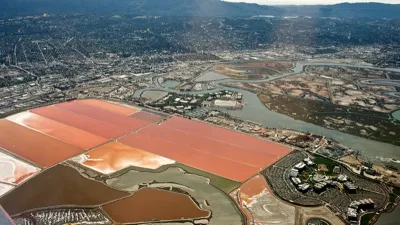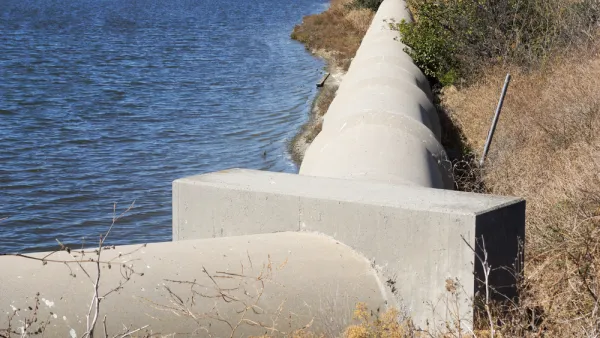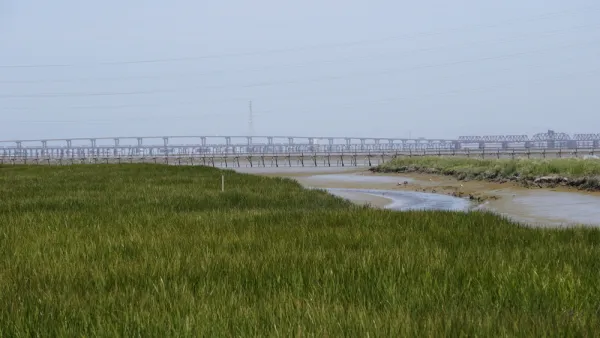The San Francisco Bay Area serves as a case study, that applies in places like Louisiana as well, of how mud shortages compound the threats of sea level rise.

John Upton reports on the surprising panacea in the effort to adapt to rising sea levels in the marshlands of the San Francisco Bay Area. John Upton explains the problem:
Marshes capture mud from water to grow and sustain themselves. A worsening shortage of mud floating in San Francisco Bay and its waterways is contributing to erosion. It’s threatening plans to block flooding from sea level rise through the restoration of wetlands in the Bay Area, where homes and office buildings are packed into low-lying areas.
Meanwhile, scientists are quickly realizing the pressing need for these projects to be successfully implemented.
The article goes into great detail in describing the critical role of mud to habitat in the San Francisco Bay Area, though the problem is also rampant along the Louisiana coastline.
According to Upton, 42,000 acres of wetlands have been restored in the Bay Area since 1999, when Bay Area agencies released a plan to restore 100,000 acres of wetlands. More help could be on the way:
Voters in the nine Bay Area counties in June will consider imposing a new annual property tax [pdf] of $12 per parcel to reduce water pollution and help fund an acceleration of marsh restorations. Some of the funds could be spent addressing the sediment shortfall. The tax would raise about $25 million a year — “a fraction of what is needed,” a Contra Costa Times editorial noted last week.
FULL STORY: Mud Shortage Eroding California’s Climate Defenses

National Parks Layoffs Will Cause Communities to Lose Billions
Thousands of essential park workers were laid off this week, just before the busy spring break season.

Retro-silient?: America’s First “Eco-burb,” The Woodlands Turns 50
A master-planned community north of Houston offers lessons on green infrastructure and resilient design, but falls short of its founder’s lofty affordability and walkability goals.

Delivering for America Plan Will Downgrade Mail Service in at Least 49.5 Percent of Zip Codes
Republican and Democrat lawmakers criticize the plan for its disproportionate negative impact on rural communities.

Test News Post 1
This is a summary

Test News Headline 46
Test for the image on the front page.

Balancing Bombs and Butterflies: How the National Guard Protects a Rare Species
The National Guard at Fort Indiantown Gap uses GIS technology and land management strategies to balance military training with conservation efforts, ensuring the survival of the rare eastern regal fritillary butterfly.
Urban Design for Planners 1: Software Tools
This six-course series explores essential urban design concepts using open source software and equips planners with the tools they need to participate fully in the urban design process.
Planning for Universal Design
Learn the tools for implementing Universal Design in planning regulations.
EMC Planning Group, Inc.
Planetizen
Planetizen
Mpact (formerly Rail~Volution)
Great Falls Development Authority, Inc.
HUDs Office of Policy Development and Research
NYU Wagner Graduate School of Public Service




























